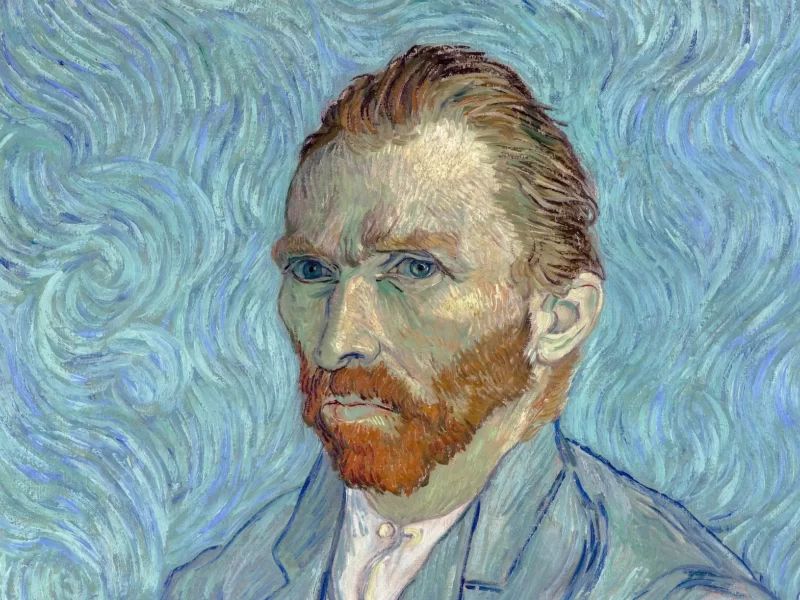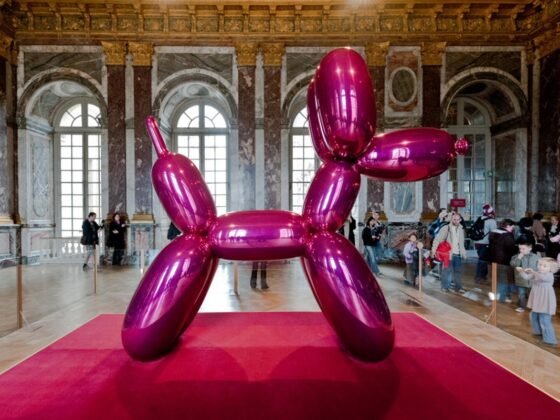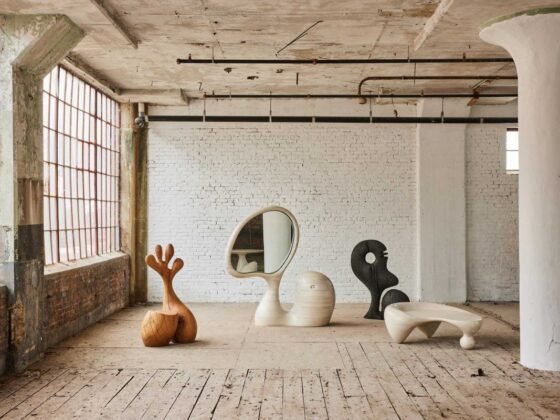Vincent Van Gogh’s art pieces are widely admired across the globe. His distinct post-impressionist style, featuring bold brushstrokes and vibrant hues, is easily identifiable.
During his lifetime, the artist’s work did not receive much recognition, and he had limited success in selling his paintings. However, after his death, he gained immense fame, and he is now considered one of the most renowned painters to have ever lived. His original artworks are valued in millions, and some of Van Gogh’s priciest paintings include the Portrait de l’artiste sans barbe (1889) which fetched $71.5 million in 1998, and the Portrait du Docteur Gachet (1890) which sold for $82.5 million in 1990. Although numerous original Van Gogh paintings are housed in prestigious museums and private collections worldwide, the majority of them are now located in the Van Gogh Museum in Amsterdam.
The Works Of Van Gogh
Despite creating a significant portion of his artwork in the final decade of his life, Van Gogh was remarkably productive and produced nearly 2000 pieces throughout his lifetime. Each of these works holds a distinctive place in the artist’s legacy. Below are some of his most well-known paintings.
Starry Night, 1889
One of Van Gogh’s most iconic paintings, Starry Night (1889), holds particular significance in the artist’s life. Before creating this masterpiece, Van Gogh struggled with mental health issues, leading him to cut his left ear. As a result, he was admitted to the Saint-Paul-de-Mausole asylum in Saint-Rémy-de-Provence in 1888 to recover. Interestingly, the view depicted in Starry Night is actually based on the scenery Van Gogh witnessed from his asylum bedroom. The swirling blues of the moonlit night sky have come to epitomize the artist’s distinctive style, conveying intense emotions through his use of color.

Sunflowers, 1889
During his stay in Arles, located in the south of France, between 1888 and 1889, Van Gogh painted a series of five sunflowers in a vase, using only various shades of yellow and a hint of green. He explained that these flowers symbolized “gratitude” for him, and thus, he hung one of them in his dwelling. Later on, his friend and fellow artist, Paul Gauguin, who stayed with him for a short period, admired the sunflower paintings and requested one for himself. Van Gogh kindly gave him one. Today a copy of it resides in the Van Gogh Museum in Amsterdam.
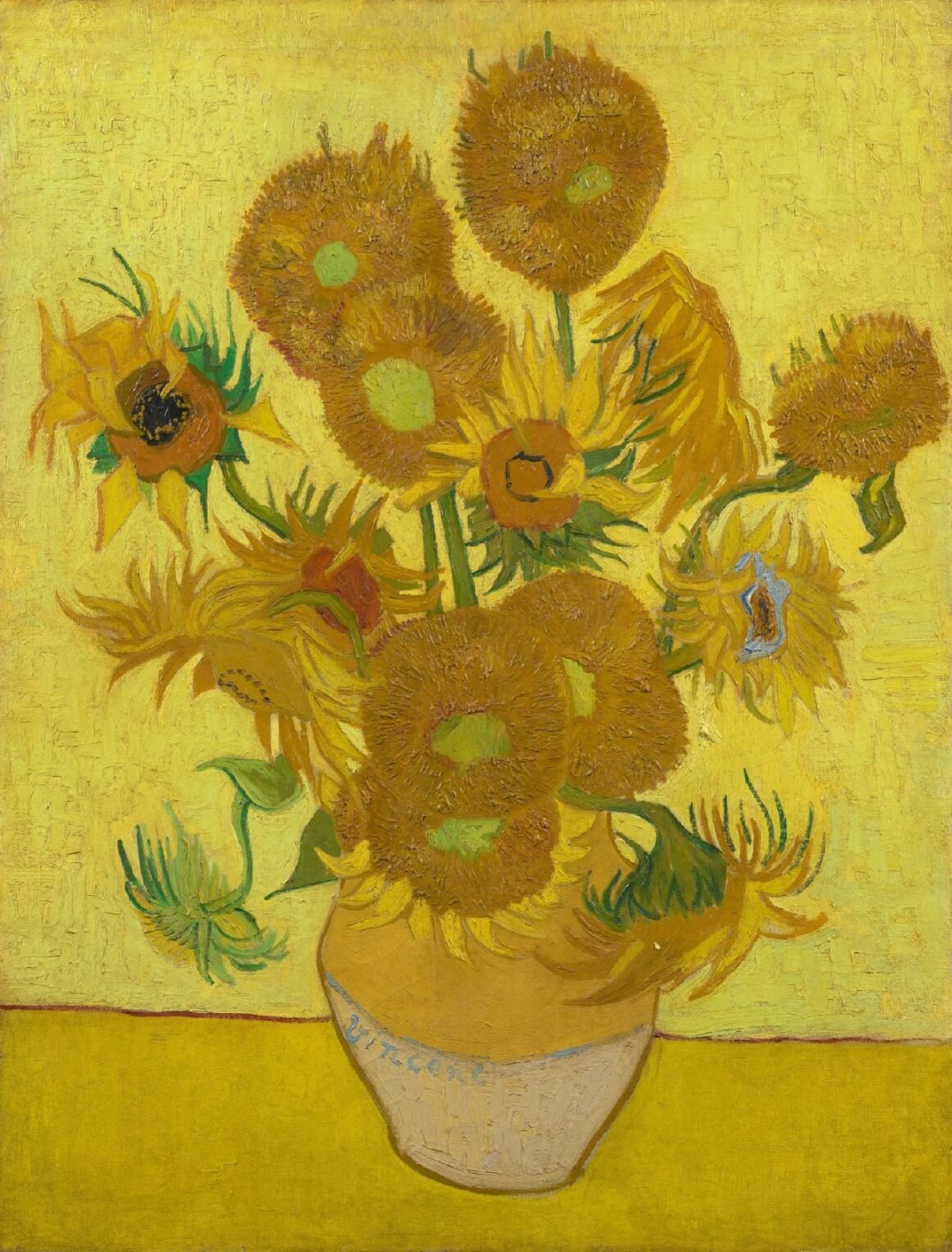
Self-Portrait, 1889
Throughout his career, Van Gogh produced numerous self-portraits, totaly no less than 35. Among them, the one painted in 1889, displayed below, is particularly famous. In this portrait, Van Gogh is seen wearing his signature blue jacket and shirt, representing his typical work attire. With an aim to depict his truest self, he accentuates his distinctive facial features, including the furrow in his brow, and highlights the striking red hues of his hair and beard. This painting is one of the last self-portraits he created before his passing the following year.
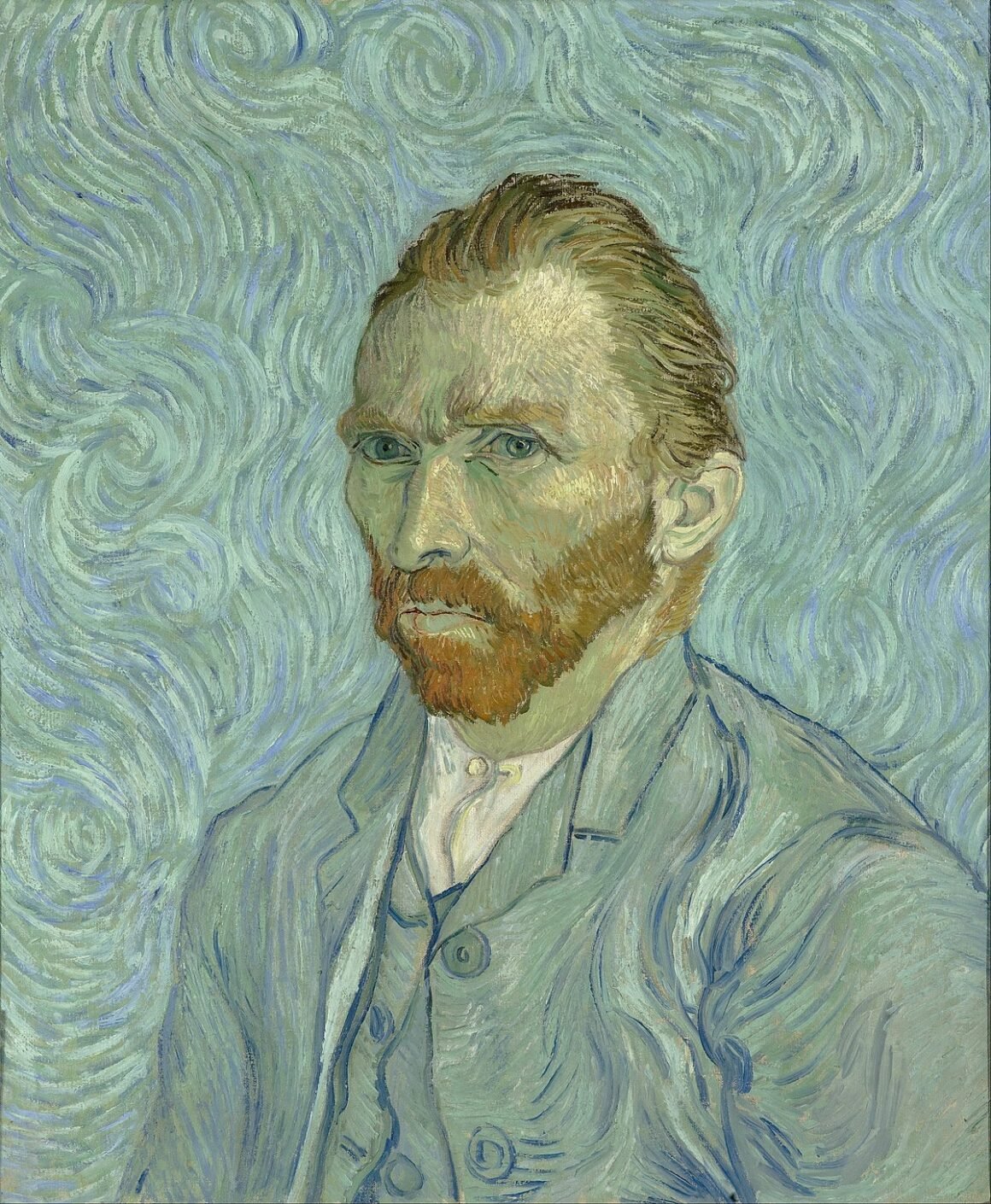
The Potato Eaters, 1885
The Potato Eaters (1885) marks a pivotal moment in Van Gogh’s artistic development, particularly in terms of his style and technique. Through depicting a family partaking in a humble potato meal, he aimed not only to establish himself as a painter of peasant life but also to challenge his artistic skills by experimenting with light and shadows. Specifically, he utilized the technique of raking light and chiaroscuro to accentuate his subjects’ features.
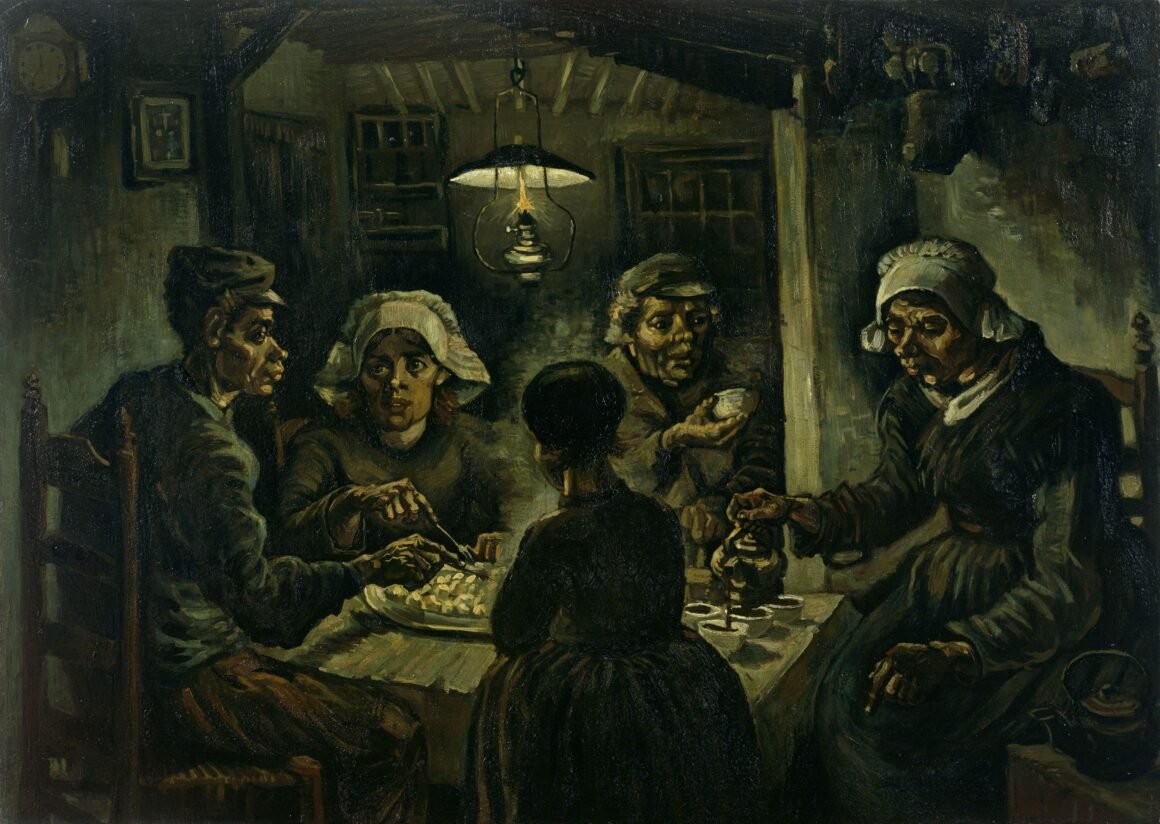
Wheatfield with Crows, 1890
One of Van Gogh’s last works, Wheatfield with Crows, portrays crows taking flight from a wheat field and soaring into the vast, deep blues of the sky above. The inclusion of a small path running through the center of the canvas evokes a sense of solitude and ambiguity. Many interpret this painting as a foretelling of Van Gogh’s suicide and a reflection of the isolation he experienced throughout his life. It carries even greater poignancy given that it was painted in the weeks leading up to his death.
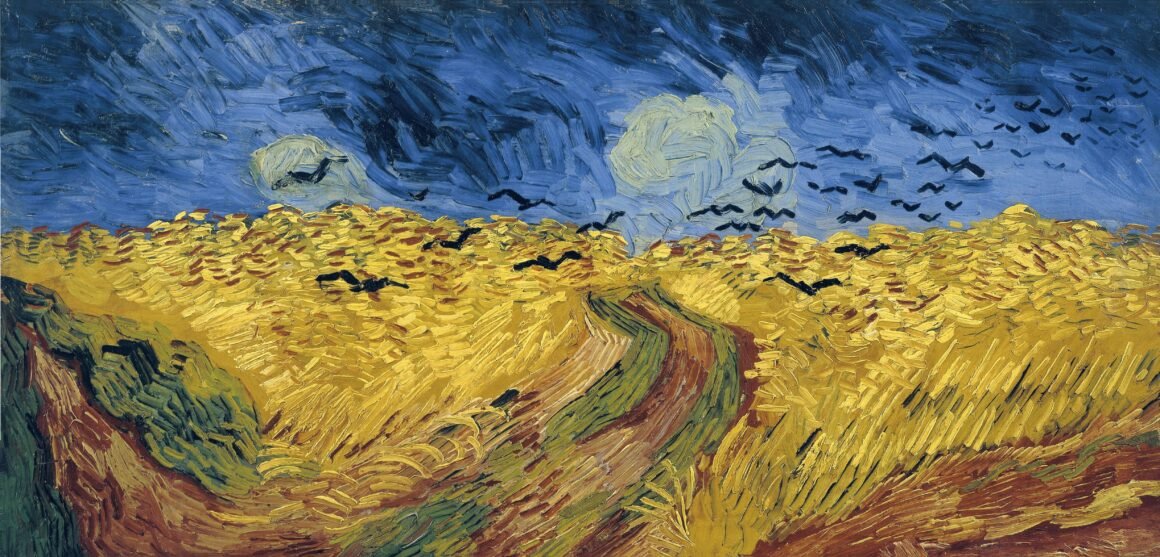
Irises, 1889
Irises is a collection of iris paintings by Van Gogh, executed during his time at the asylum in Provence. The flowers themselves were located in the asylum’s garden, which explains their frequent appearance in his works from that period. This series bears the influence of ukiyo-e Japanese prints, which often highlighted flowers as their main subject and used distinctive shapes and colors to convey their delicate and luminous essence.
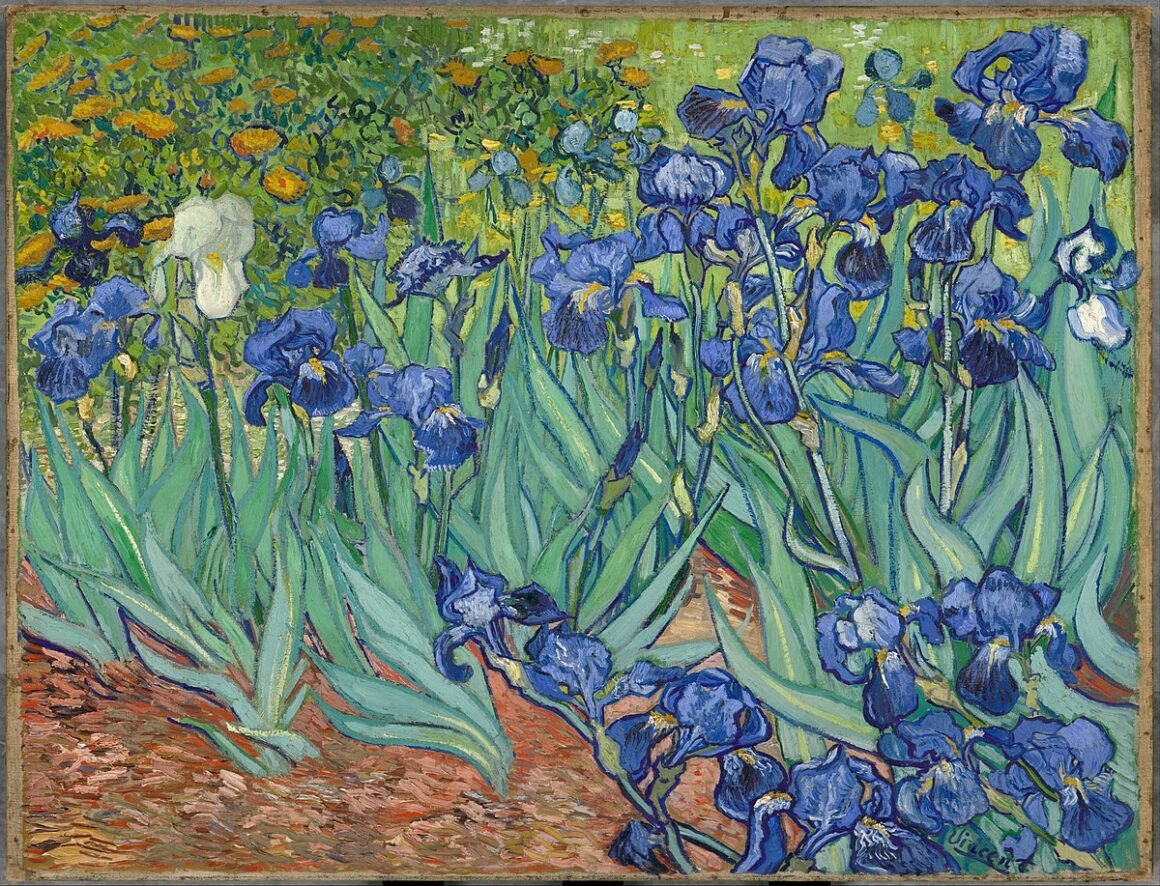
The Bedroom in Arles, 1888
One of Van Gogh’s most renowned artworks is The Bedroom in Arles (1888), which portrays his own bedroom. The painting showcases the artist’s modest furniture and contrasting hues, although scientific analysis indicates that the colors we see now are the outcome of aging. Van Gogh purposely excluded perspective to achieve a flattened effect, similar to Japanese prints. In a letter to his brother Theo, Van Gogh expressed that viewing the painting should soothe the mind or imagination.


